Junichi Arai was born in the early 1930s in Japan to a family of weavers of kimono fabrics. Followed in his family’s tradition, he grew to love fibers and helped bring the ancient art of shibori into the modern age through the use of new and experimental materials which embraced metals as woof, warp or both. He has grown from dyeing with indigo and other natural substances on cotton, silk and other natural fibers to applying disperse dyes on poly based fibers woven with fine metal. Visit his latest exhibit in Japan through the wonders of the internet: http://www.spoon-tamago.com/2013/03/25/arai-junichi-tradition-and-creation/ and the slide show here is great: http://www.operacity.jp/ag/exh148/e/gallery.html#7 The knowledge and skills he developed through years of study and artistic creation has earned him the designation of National Treasure and he is revered throughout Japan for his contributions to the arts.
I first became acquainted with the his works sometime in the 1990s. My friend, Mei-Ling St Leger, attended a Surface Design Association Conference in Kansas City where she attended a workshop he conducted. She learned the technique of melt-off using lame’ fabrics. She taught me the basics and I really fell in love with the process. The process I am using here to create my melt-off requires a lame’ fabric which is a combination of nylon and aluminum. Part of the aluminum is eaten off which leaves just the nylon in places. The cloth is then dyed with wash fast acid dye. Here is a piece I created for The Red Show at the Hillsborough Community College Ybor City Art Gallery.
This photo shows the piece hanging from the ceiling at the gallery.
This is a close up of the inner layer showing the melt-off. I use silver lame’ and over dyed with mixture of red and yellow wash fast acid dyes.
This picture is of a 6 yard piece I created for a show at the Art Center Manatee. This one was created from gold lame’ which was over dyed with chocolate wash fast dye.
This is a close-up of the chocolate piece.
.
Here are two pictures showing the gold/chocolate piece during its creation.
The first one shows the piece wrapped and clamped ready to go into the stripping bath. The second shows the piece after it came from the dye bath and before the wrapping and clamping were released.
And finally here is Mei-Ling with one of her pieces.
And these are her Chrysalis pieces.
I offer this technique to you today to add to your tool kit. It is a simple, but elegant, technique. You must use a lame’ that has aluminum for the metal which is usually woof and nylon for both woof and the warp. Since this is a shibori project you should manipulate the fabric in any of several shibori techniques. The fabric is then placed in a solution of water and soda ash (scant 1/3 C soda ash to 2 gallons of water) which has been brought to a simmer. Two things will happen. The nylon will become permanently pleated due to the heat and the alkali solution will eat (melt) off the aluminum. Simmer this for 8 to 10 minutes, but watch closely as the aluminum will suddenly be gone and the alkali solution can penetrate the resist. You will then be left with a piece of nylon. Remove the fabric and immediately rinse with tap water. I do this outside complete with Darth Vader mask to keep the fumes out of my house and away from my cat. And I have the hose ready to go immediately to stop the action of the soda ash and begin to cool the fabric. The fabric is now ready for an acid dye bath. You can either leave the resist in place, remove parts of it or remove it all before dyeing. ProChem has wonderful directions for the wash fast Acid dyes at this site: http://www.prochemical.com/directions/Acid%20Dyes%20PDF/WF%20-%20Immersion.pdf I usually use the white vinegar since it is so readily available. Please take GOOD HEALTH precautions and use rubber gloves, a good mask, preferable a Darth Vader type, and always rinse your fabrics with water between techniques to prevent the accidental mixture of a noxious gas.Keep watching, as I am ready to start some experimentation with the melt-off technique and will be posting further results here later in the month.


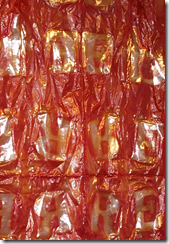
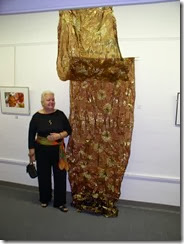
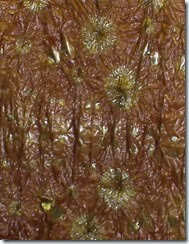
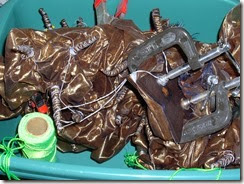
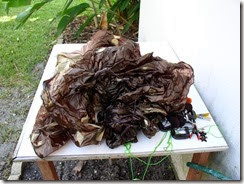
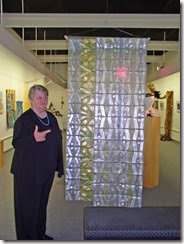
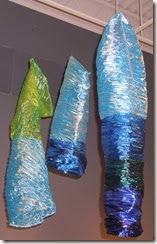
2 comments:
Well, this is just awesome!! I know what I'm shopping for at JoAnn next time. And I expect it will work with disperse and polyester, if I can't find a nylon based lame. Maybe in the stash . . .
Really remarkable Linda. Will you have some of this with you in SA?
Post a Comment